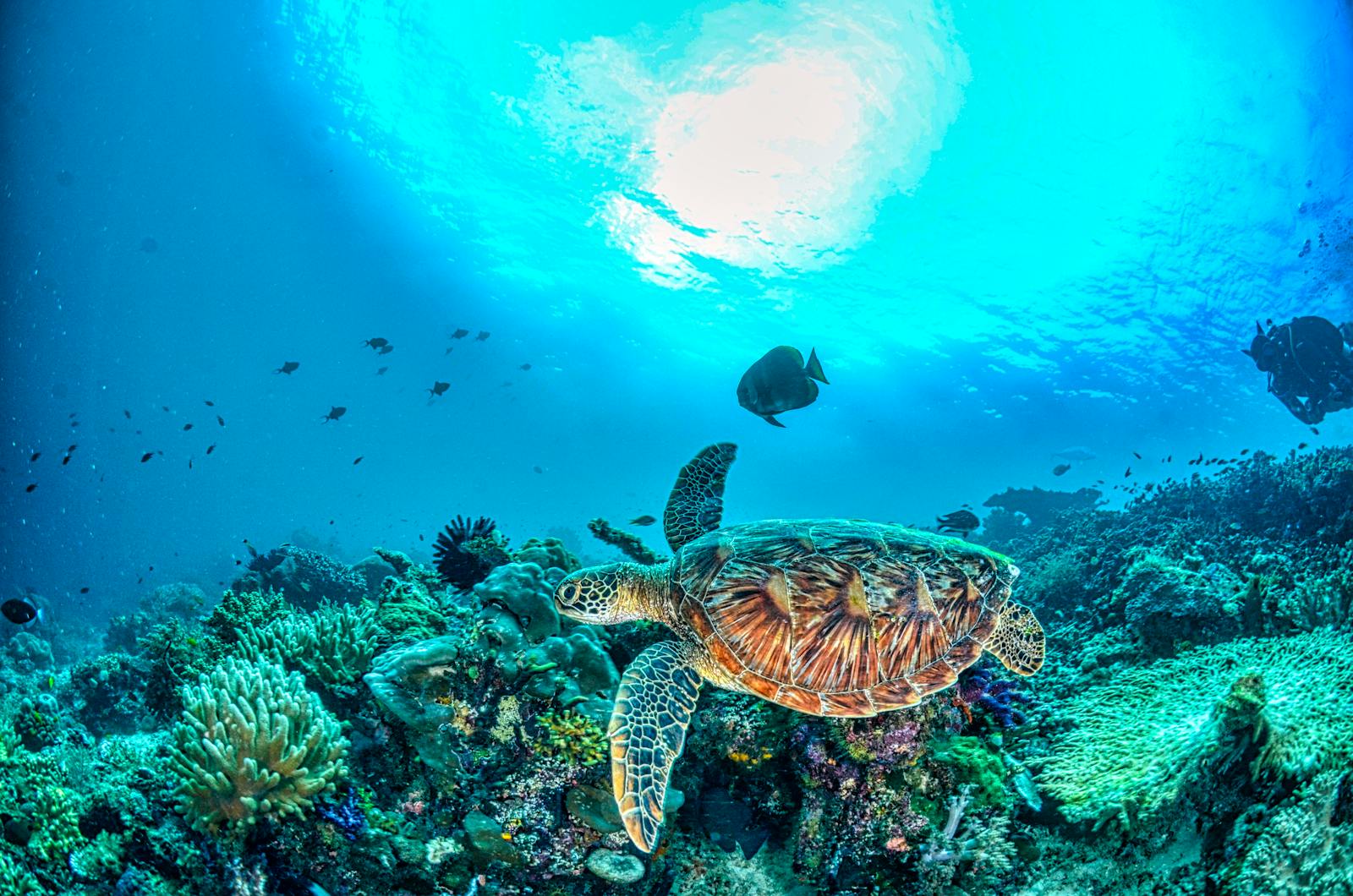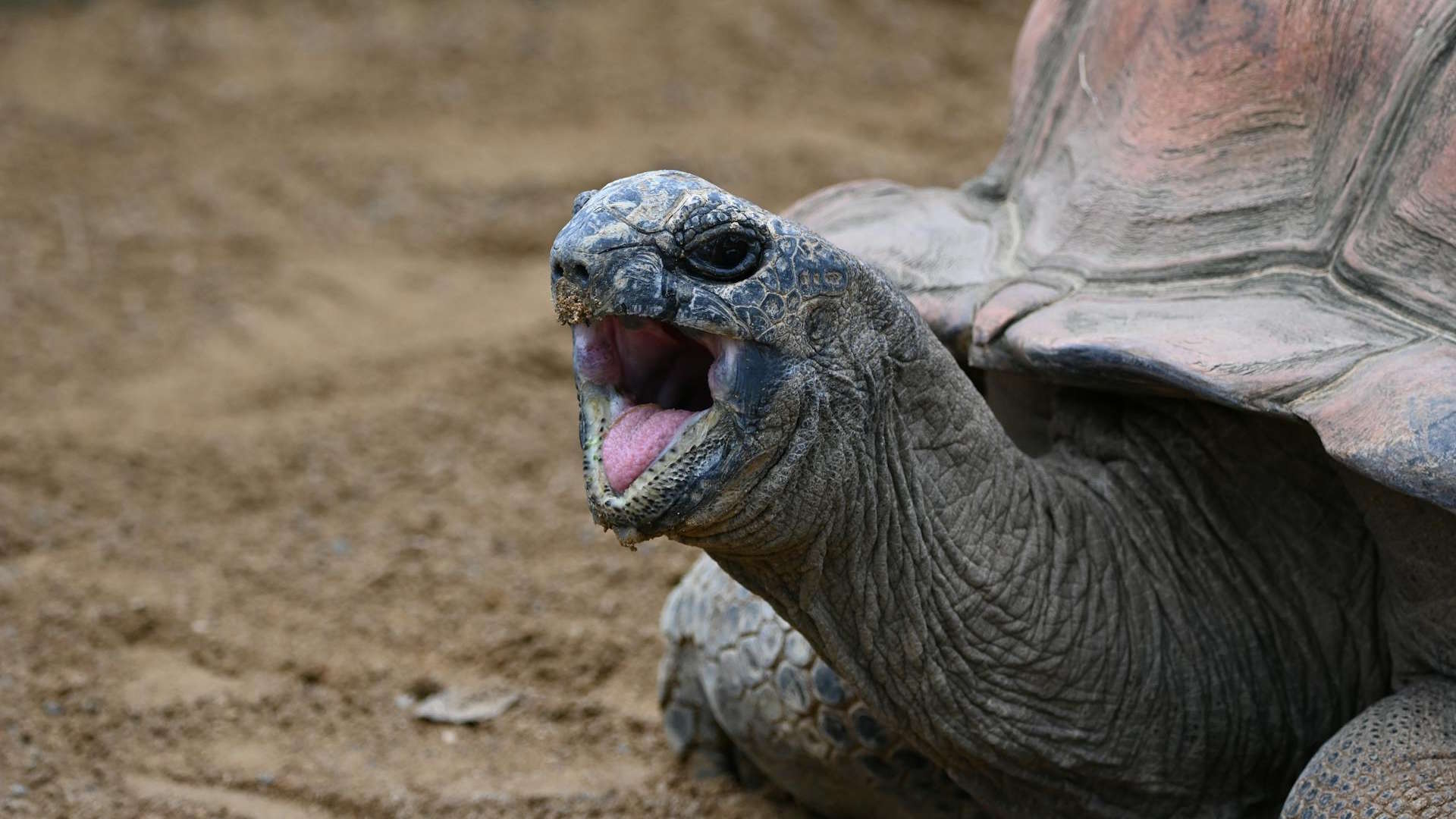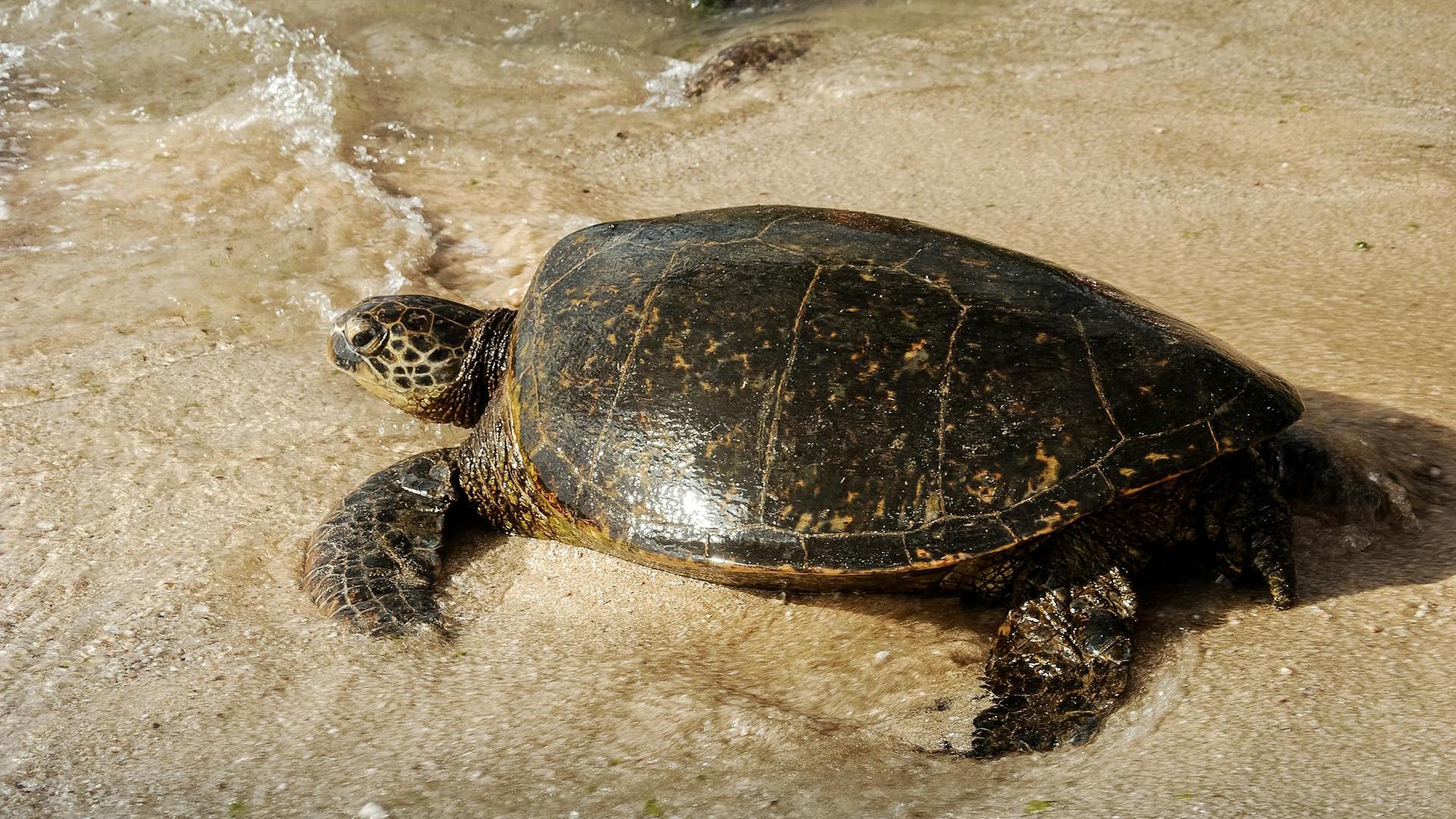In the vast tapestry of Earth’s biodiversity, turtles stand as remarkable survivors of evolutionary history, having weathered the changes that extinguished the dinosaurs. Yet today, these ancient mariners and terrestrial wanderers face unprecedented threats. Nearly 61% of all turtle species are threatened or already extinct, making them among the most endangered vertebrate groups on our planet. From the mysterious leatherbacks crossing ocean basins to the tiny bog turtles hiding in wetland pockets, turtle species across the globe are vanishing at alarming rates. Their decline represents not just the loss of unique creatures, but the unraveling of ecological relationships developed over millions of years. This article explores the world’s most critically endangered turtle species, the challenges they face, and the urgent conservation efforts working to ensure these remarkable reptiles continue their ancient journey on Earth.
Hawksbill Sea Turtle (Eretmochelys imbricata)
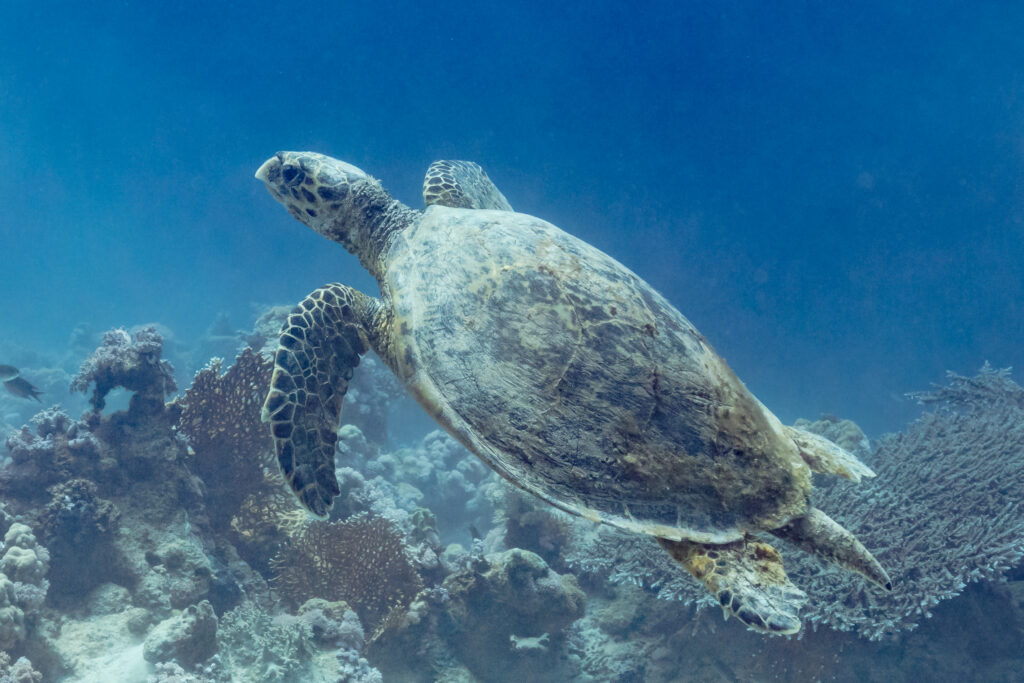
The Hawksbill sea turtle, instantly recognizable by its pointed beak and beautifully patterned shell, faces extinction throughout its tropical range. Critically endangered according to the IUCN Red List, these turtles have declined by more than 80% over the last century primarily due to the illegal wildlife trade. Their distinctive shells, which create the material known as “tortoiseshell,” have been hunted extensively for jewelry, ornaments, and decorative items despite international bans. Hawksbills play a crucial ecological role as they feed primarily on sponges, helping maintain the health and diversity of coral reef ecosystems. Their specialized diet makes them irreplaceable components of marine environments, as few other species consume these particular sponges that would otherwise outcompete slow-growing corals.
Yangtze Giant Softshell Turtle (Rafetus swinhoei)

Perhaps the most precarious turtle population on Earth, the Yangtze giant softshell turtle teeters on the edge of extinction with only three known individuals remaining worldwide. This critically endangered freshwater species, native to China and Vietnam, has been devastated by habitat destruction, pollution, and hunting for both consumption and traditional medicine. Their extraordinary size—reaching lengths of up to 39 inches and weights of 220 pounds—hasn’t protected them from human exploitation. Conservation efforts have faced heartbreaking setbacks, including the 2019 death of the last known female in captivity at Suzhou Zoo in China after an artificial insemination attempt. The species now faces the grim prospect of becoming functionally extinct unless a female can be discovered or innovative reproductive technologies developed.
Ploughshare Tortoise (Astrochelys yniphora)

The ploughshare tortoise, endemic to a tiny region of northwestern Madagascar, represents one of the rarest land tortoises on the planet with fewer than 100 individuals remaining in the wild. Their distinctive golden-domed shells with a unique projection (the “ploughshare”) from the front of their plastron make them instantly recognizable and, tragically, highly desirable in the illegal pet trade. A single tortoise can fetch tens of thousands of dollars on black markets, driving poaching to catastrophic levels despite armed guards protecting the remaining population. Conservation efforts have included marking the shells of wild tortoises with identifying engravings to reduce their black market value and captive breeding programs to boost population numbers. Climate change now poses an additional threat, as rising temperatures in their already limited habitat could disrupt the temperature-dependent sex determination of hatchlings.
Kemp’s Ridley Sea Turtle (Lepidochelys kempii)

The Kemp’s Ridley sea turtle holds the unfortunate distinction of being the most endangered sea turtle species and has the most unusual daytime nesting behavior of all sea turtles. Endemic primarily to the Gulf of Mexico, these small sea turtles were pushed to the brink of extinction in the 1980s when their population plummeted to fewer than 1,000 nesting females. Their synchronized mass nesting events, known as “arribadas,” once involved tens of thousands of turtles coming ashore simultaneously but are now just a fraction of their historical size. The 2010 Deepwater Horizon oil spill devastated their primary feeding grounds, creating yet another setback for recovery efforts. Despite intensive conservation measures, including protected nesting beaches and turtle excluder devices on fishing nets, the Kemp’s Ridley continues to face serious threats from climate change, coastal development, and incidental capture in fishing gear.
Madagascar Big-headed Turtle (Erymnochelys madagascariensis)
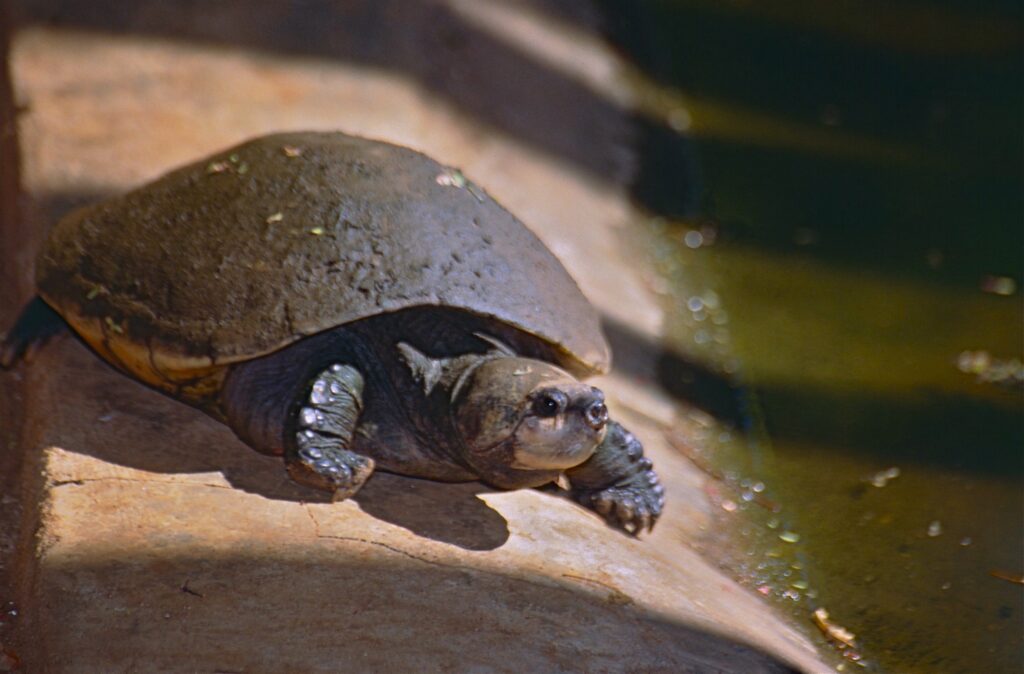
The Madagascar big-headed turtle represents a unique evolutionary lineage as the only African representative of a family otherwise found in South America, highlighting ancient connections between these continents. Found exclusively in western Madagascar’s rivers and lakes, this critically endangered species has declined by more than 80% in just three generations. Local consumption of both the turtles and their eggs remains the primary threat, despite legal protections that are difficult to enforce in remote areas. Their specific habitat requirements—slow-moving freshwater with abundant vegetation—have been degraded by sedimentation from deforestation, agricultural runoff, and damming of waterways. Community-based conservation programs working with local villages have shown promise, establishing sustainable fishing practices and turtle monitoring teams that provide alternative livelihoods while protecting remaining populations.
Burmese Roofed Turtle (Batagur trivittata)

The Burmese roofed turtle’s story represents both the depths of conservation crisis and the potential for recovery when dedicated efforts are implemented. Once believed extinct, this critically endangered river turtle was rediscovered in Myanmar in the early 2000s with fewer than ten adult females remaining in the wild. The males of this species develop striking breeding colors, with bright yellow, black, and red markings on their heads during mating season. Conservation groups working with Myanmar’s government established captive breeding facilities that have successfully produced over 1,000 turtles, creating a safety net for the species. Wild protection efforts focus on the remaining nesting beaches along the Chindwin River, where community nest protection teams guard against egg collection and predators, allowing natural reproduction to continue while the captive population grows.
Western Swamp Turtle (Pseudemydura umbrina)
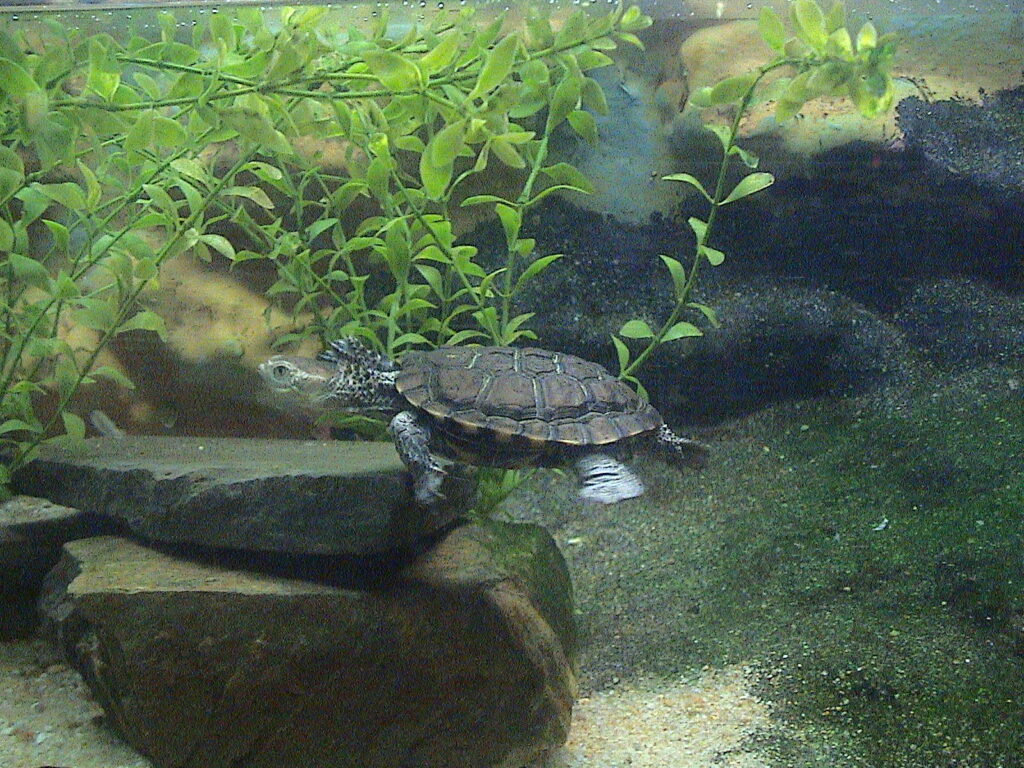
Australia’s rarest reptile, the Western swamp turtle, clings to existence in just a handful of wetlands near Perth in Western Australia. This tiny turtle, reaching only 15 cm in length, has the most restricted range of any Australian turtle species and faces multiple threats from urban development, water extraction, and introduced predators. Climate change presents perhaps the most insidious threat, as their shallow seasonal swamps are drying earlier each year, reducing the already brief window for juveniles to grow before estivation (summer dormancy). Conservation innovations have included creating artificial wetlands with controlled water levels and even considering assisted migration to sites further south where future climate conditions might be more suitable. The species has become a poster child for climate adaptation strategies in conservation, as traditional protected area approaches may be insufficient if their habitat becomes climatically unsuitable.
Northern River Terrapin (Batagur baska)

Once abundant throughout the major river deltas of South Asia, the northern river terrapin now faces functional extinction in the wild, with perhaps fewer than 50 adults remaining across its range. This large riverine turtle, which can reach 60 cm in length, was decimated by decades of egg collection, hunting for meat, and habitat destruction across Bangladesh, India, Myanmar, and elsewhere in Southeast Asia. Males develop striking breeding colors with black heads and bright red or blue noses during the mating season. Conservation breeding centers in Bangladesh and India maintain small assurance colonies that represent the species’ last hope, with recent successful breeding providing a glimmer of optimism. Restoration of mangrove habitats in the Sundarbans region offers potential release sites if these captive breeding efforts can produce sufficient numbers for reintroduction.
Radiated Tortoise (Astrochelys radiata)

The radiated tortoise, with its striking star-patterned shell, has suffered catastrophic population collapse in its native southern Madagascar due to collection for the international pet trade and local consumption. Studies suggest that populations have declined by more than 80% in just the last 30 years, with poachers now targeting previously secure populations in remote areas. Single poaching events have been documented involving thousands of tortoises collected for food markets or illegal export. The species’ naturally slow reproduction—females lay just 3-12 eggs per year and individuals take up to 20 years to reach sexual maturity—makes recovery from such losses extremely difficult. Confiscation events have sometimes overwhelmed conservation facilities, with one 2018 seizure in Madagascar discovering over 10,000 tortoises in a single house, creating immediate welfare and housing challenges for rescue organizations.
Central American River Turtle (Dermatemys mawii)
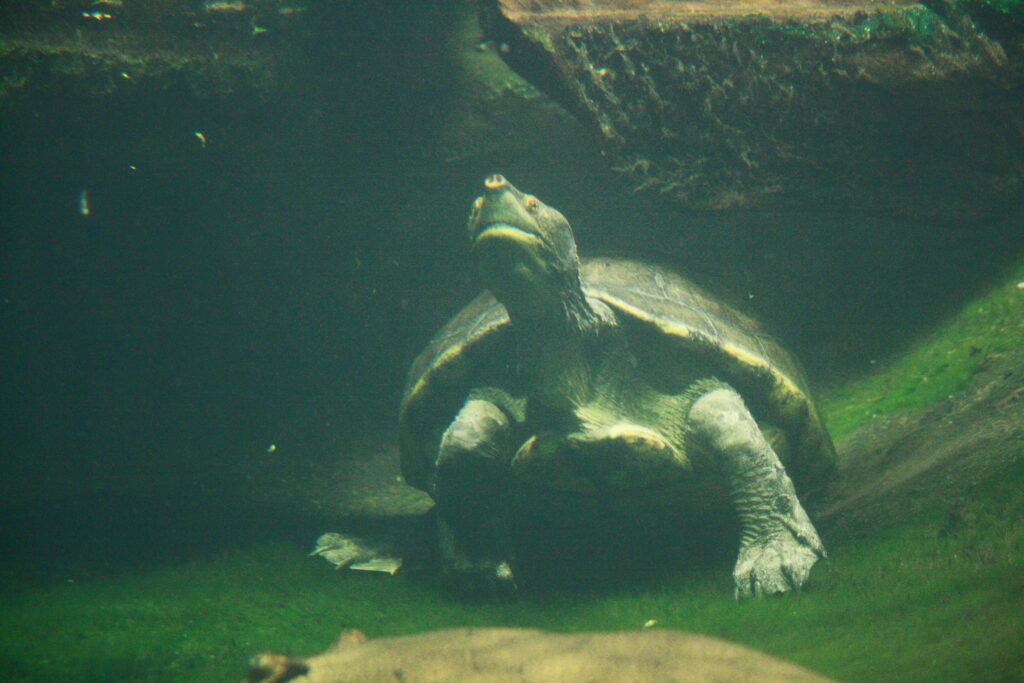
The Central American river turtle, locally known as the hicatee or tortuga blanca, represents the last surviving member of a family dating back 65 million years. Found in rivers, lagoons, and other freshwater habitats from southern Mexico through Guatemala and Belize, this fully aquatic species has declined by more than 85% across its range. Considered a delicacy, especially during Easter celebrations, hunting pressure has devastated populations despite legal protections. Unlike many turtles, they are completely herbivorous as adults, feeding primarily on fruits, leaves, and aquatic vegetation that falls into the water, making them important seed dispersers in riverine ecosystems. Conservation efforts include community-based protection of nesting females, captive breeding programs, and education initiatives aimed at reducing demand for their meat during religious holidays when consumption traditionally peaks.
Spotted Turtle (Clemmys guttata)

The spotted turtle, with its polka-dotted shell that resembles a starry night sky, faces decline throughout its range in the eastern United States and Canada. These small freshwater turtles, rarely exceeding 12 cm in length, depend on a mosaic of wetland habitats that have been fragmented and destroyed by development, agriculture, and resource extraction. Their specific habitat requirements and tendency to travel between wetlands make them particularly vulnerable to road mortality and habitat fragmentation. The pet trade presents another significant threat, as their distinctive appearance makes them desirable to collectors, with illegal collection removing breeding adults from already diminished populations. Climate change threatens to alter hydroperiods in the temporary wetlands they depend on, potentially disrupting their reproductive cycles and habitat suitability across their range.
Southern River Terrapin (Batagur affinis)
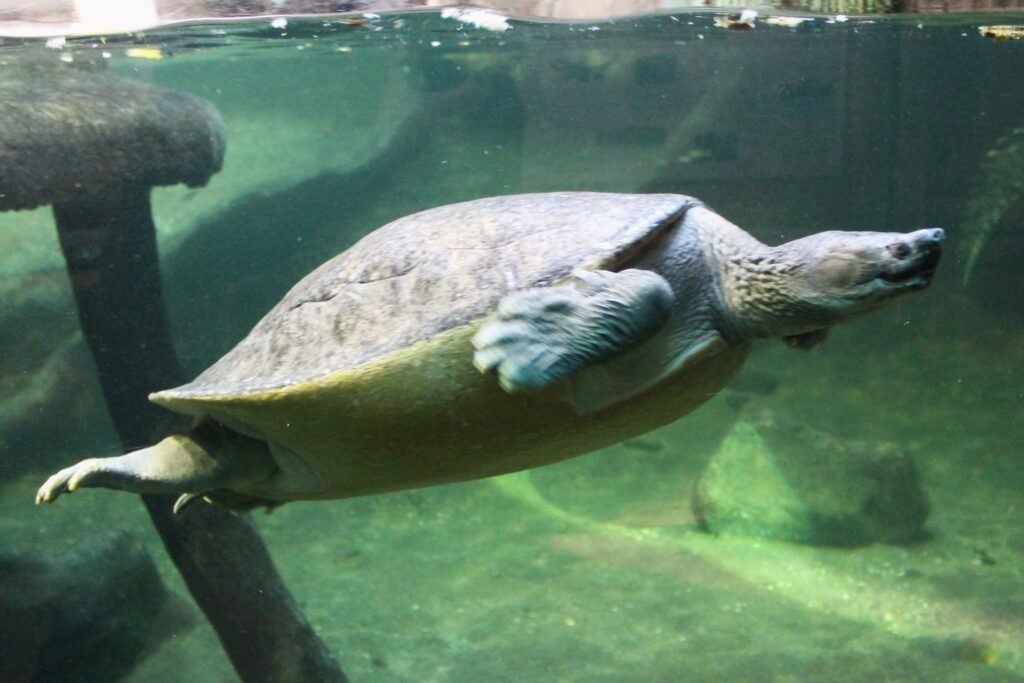
The southern river terrapin, which can grow to impressive sizes exceeding 60 cm in length, has been driven to near extinction throughout its range in Southeast Asia. Once abundant in the major river systems of Cambodia, Indonesia, Malaysia, and Thailand, fewer than 10 breeding females are estimated to remain in Cambodia, with similarly dire situations in other range countries. Males develop spectacular breeding colors with white heads and red eyes during mating season, a sight rarely witnessed in the wild today. Extensive egg collection over decades decimated reproductive output, while adults were heavily harvested for meat and traditional medicine. The species gained global attention when Royal Turtle conservation became an initiative supported by the Cambodian monarchy, leading to modest protection of nesting beaches and headstarting programs for hatchlings. Recent discoveries of previously unknown populations provide a fragile hope for species recovery if immediate protection can be implemented.
Conservation Challenges and Future Outlook

The multifaceted threats facing the world’s most endangered turtles require equally diverse conservation responses, from traditional protected areas to cutting-edge reproductive technologies. Habitat protection remains fundamental, but increasingly insufficient alone as climate change shifts suitable ranges and alters critical environmental cues that turtles have evolved with over millions of years. The illegal wildlife trade continues to undermine conservation efforts, with sophisticated criminal networks adapting to enforcement strategies and exploiting new technologies for trafficking. Community-based conservation shows particular promise, engaging local populations as stakeholders rather than adversaries in turtle protection. Perhaps most encouragingly, several species thought extinct have been rediscovered, and others have been pulled back from the brink through intensive intervention. The coming decade will likely determine whether these ancient creatures—survivors of multiple mass extinctions—can weather the current biodiversity crisis or join the growing list of anthropogenic extinctions.
As we witness these remarkable creatures battle for survival against overwhelming odds, their plight serves as both warning and inspiration. Turtles have navigated Earth’s waters and landscapes for over 220 million years, evolving remarkable adaptations and ecological relationships. Their potential loss represents not just the disappearance of individual species but the unraveling of ecosystem functions developed over evolutionary timescales. Yet in the face of these challenges, dedicated conservationists, scientists, and communities continue working tirelessly to ensure these living fossils remain part of our planet’s future. The story of the world’s most endangered turtles is still being written, and while the challenges are immense, the resilience of both the species and those fighting to protect them offers hope that these ancient mariners will continue their remarkable journey for generations to come.

